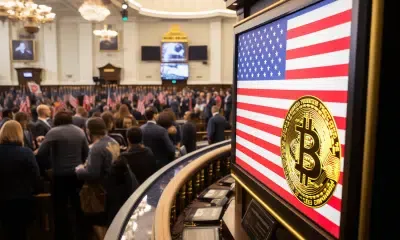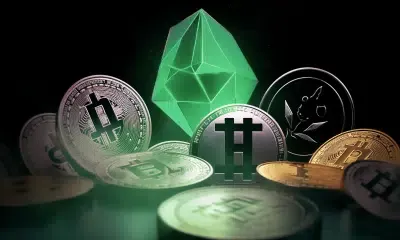
Cardano (ADA) chose a different path in the fast, sometimes wild, world of crypto. It didn’t rush. Instead, Cardano built itself carefully, focusing on deep research. Charles Hoskinson, its founder, often highlights this reliance on science and thorough academic checks. The goal? A blockchain that works for many, lasts a long time, and proves its safety. The big question, though, is if this careful, scholarly way of doing things makes ADA a smart buy in the risky crypto game. So, is Cardano a good investment, or just an overengineered experiment?
A Foundation Built on Scholarship
Cardano stands on a deep belief in academic study. Input Output Global (IOG), the company building the blockchain, usually starts new ideas and systems as research papers. These aren’t just simple plans; university researchers and specialists in digital security and network design check them thoroughly before anyone writes a single line of code. With more than 90 published papers backing its tech, Cardano clearly doesn’t follow the common “build quick, fix later” attitude found in many crypto projects.
You can really see this science-first thinking in Ouroboros, its Proof-of-Stake (PoS) system for reaching agreement. Ouroboros was the first PoS system built from reviewed academic work that also mathematically proved it was secure. Cardano also has a special two-layer structure. The Cardano Settlement Layer (CSL) handles ADA money transfers and similar digital items. Then, the Cardano Computation Layer (CCL) runs smart contracts and decentralized apps. Keeping these two separate is designed to make the system more adaptable, able to grow bigger, and easier to look after, since each layer can be updated on its own.
Cardano also sets itself apart with its Extended Unspent Transaction Output (EUTXO) system. This is a step up from Bitcoin’s UTXO system. EUTXO lets these transaction bits hold complex information and instructions, which makes smart contracts possible while still keeping things predictable. Because it’s predictable, you know what a transaction will do and cost before you send it. That’s a big plus compared to systems where transaction fees can jump around wildly and unexpectedly.
The Plan: Growing Step-by-Step Towards True Independence
Cardano’s growth is planned in five clear stages, with each one adding new abilities:
- Byron (Getting Started): This is when Cardano first appeared, letting people send and receive ADA and use the first Daedalus and Yoroi wallets.
- Shelley (Going Decentralized): Here, the network shifted to a Proof-of-Stake system run by the community through stake pools. This change made the network much safer and stronger.
- Goguen (Adding Smart Contracts): The Alonzo update brought in smart contracts, opening doors for developers to create dApps and new kinds of digital tokens.
- Basho (Growing Bigger & Connecting): This is what’s happening now. The goal is to make the network faster and handle more activity. Important work includes things like Hydra, a Layer-2 system meant to speed up transactions by handling them off the main chain, and improvements to Ouroboros with something called Ouroboros Leios.
- Voltaire (Community Rule): This last stage aims to create a system that runs itself. It will have voting on the blockchain and a treasury, giving ADA holders the power to decide where Cardano goes next. The Chang Hard Fork is a key moment in making this happen.
The Builders and the Thinker
Three main groups guide Cardano’s growth and help spread the word:
- Input Output Global (IOG): They’re the main tech brains, pushing forward Cardano’s engineering and research.
- Cardano Foundation: This non-profit, based in Switzerland, looks after the growth of the Cardano world, its use, and setting common standards.
- EMURGO: This is the business side of things, working worldwide to create, fund, and guide companies using Cardano.
Charles Hoskinson, who leads IOG and also helped start Ethereum, is still the person most people connect with Cardano. His dream of a blockchain built on solid science, able to grow big, and designed to last has clearly guided Cardano’s path. Hoskinson isn’t shy about speaking his mind and talks a lot with the community, which often stirs up conversations and can sway how people see Cardano, sometimes in good ways, sometimes not.
Taking the Ecosystem’s Temperature: Use and Buzz
Looking at early Q2 2025, Cardano’s world seems to be steadily getting bigger. More people are creating wallets, and it looks like the number of wallets being used regularly is going up too. Developers are clearly busy; Cardano often gets noted for lots of activity on GitHub, which means the main system and projects around it are constantly being worked on and improved.
When it comes to DeFi (Decentralized Finance) on Cardano, it’s still catching up to huge players like Ethereum. Still, the amount of money locked in (Total Value Locked or TVL) has been rising, and Minswap is usually out in front of the other decentralized exchanges. Cardano’s NFT scene also has a strong group of followers, and places like JPG.store are busy with people buying and selling. How many transactions are happening and what’s going on directly on the blockchain give us more clues about how healthy the network is, even if these numbers can swing up and down with how the wider market feels.
Making Real-World Inroads and How ADA Works
Cardano is working hard to get businesses and governments to use its technology. For instance, they’ve teamed up with groups in Ethiopia for projects on digital IDs and tracking educational achievements, and they’re working with companies like Dish Network. These projects are meant to prove Cardano can be useful for more than just crypto things.
ADA is the main coin of Cardano, and it’s vital to how everything works. People use ADA to pay for transaction costs and for staking – that’s where you give your ADA to a stake pool to help run the network and get more ADA as a reward. It will also be really important for voting on decisions when the Voltaire stage arrives. There will only ever be 45 billion ADA, which is a feature some people like because it means new ADA won’t keep being made forever. If you stake your ADA, you can get it back easily as there are no waiting times to unstake.
The Market View and Who It’s Up Against
Like many cryptos, ADA’s price has jumped up and down a lot. It generally follows the whole crypto market but also moves when Cardano hits big moments, like the Alonzo update. Lately, people in the market have been a bit hopeful but careful. Sometimes, big investors (called “whales”) have bought up a lot of ADA, which could mean they feel good about its future. When you look at price charts and technical signs, it’s not a clear good or bad; traders are keeping a close eye on important price points where it might stop falling or struggle to rise.
Cardano is up against many other platforms that support smart contracts, such as Ethereum, Solana, Polkadot, and Avalanche. Ethereum has the biggest crowd of users and developers right now. But Cardano tries to stand out because it focuses so much on security based on research, its Proof-of-Stake system uses less energy, and its transaction fees are usually lower. Its EUTXO system also gives it an edge because it makes transactions more predictable than Ethereum’s way of handling them.
Sizing It Up: The Good, the Bad, and the Ugly
Good Points:
- Security from Study: Its safety comes from careful, academic-style research and checks, giving it a solid base.
- Saves Energy: The Ouroboros Proof-of-Stake system uses much less power than older Proof-of-Work types.
- Plan to Grow: Updates like Hydra in the Basho stage are meant to handle many more transactions.
- Future Community Rule: The Voltaire stage is about giving real control to the users.
- Lively Scene: Developers are always working on it, and there’s a strong, enthusiastic group of supporters.
Challenges & Dangers:
- How Fast It’s Built: Because Cardano is so careful, some say it develops too slowly next to others.
- Newer Ecosystem: While its world of dApps and DeFi is getting bigger, it’s not as packed as some competitors.
- Tough Tech: The technology it uses (like Haskell, Plutus, and EUTXO) can be harder for developers to pick up.
- Getting Big Updates Right: It’s really important that major new features like Hydra and Leios are rolled out successfully.
- Rules and Laws: Like all cryptos, Cardano has to deal with changing and unclear government rules around the world. The SEC has even mentioned ADA in lawsuits as possibly being an unregistered security, though IOG disagrees.
- Price Swings: ADA’s price can go up and down wildly.
What’s Next on the Drawing Board?
Even with Voltaire getting close to being fully ready, IOG is already looking at what’s next. They’re studying ways to improve things like Zero-Knowledge Proofs (ZKPs) to give users more privacy and help the network handle even more, plus new ideas for storing data right on the blockchain. These kinds of plans for the future could make Cardano stronger and more attractive for years to come.
The Bottom Line:
Putting money into Cardano (ADA) means you’re backing a long-term idea: a safe, growing, and community-run blockchain that’s built with serious academic thought. The way it’s designed, the constant work being done on it, and its clear plan for eventual community control all make a strong argument for it. But anyone thinking of investing needs to balance these good points with the dangers from a tough market, the difficulties of getting things done on time, and the fact that crypto prices can swing wildly. What happens in the current Basho stage and the upcoming Voltaire stage will really show if Cardano can turn all its smart research into something many people use and that holds its value over time.




